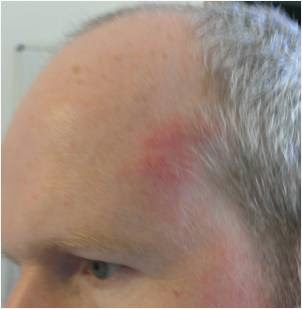 |
A birthday card I saw
recently - seriously! |
It's all been a bit quiet on the CLIPPERS front lately, so apologies for the slightly sporadic updates at the moment. Another one of these complicated
single-case studies has appeared though, so I'll give you a quick run-down. The essential feature of this 62-year old woman's story is that she was diagnosed with CLIPPERS after an episode of
shingles which was concentrated on her left ear, eye and face. There is quite a lot of detail about different treatments and symptoms but essentially, when CLIPPERS symptoms first appeared, a left-sided brain lesion was seen on MRI which later developed into a more classical CLIPPERS pattern of lesions towards the back of the brain. This is an interesting case, but as is quit common at the moment, one that is so unusual it is hard to draw too many firm conclusions. I picked up on a couple of things in the paper though.
Firstly the authors speculate that (my paraphrasing) shingles and CLIPPERS in this case are related due to the "time-course" and "
laterality". So the time-course means that one follows the other; but just because the bus arrives after I stand at the bus-stop doesn't mean that I caused the bus to arrive by standing there -
correlation versus causation. Secondly, "laterality" means "same-side"; so here, the shingles manifested on the same side as the subsequent brain-lesions. However, for the sake of argument consider that the shingles were completely unrelated to CLIPPERS and were a random occurence (the so-called "
null-hypothesis"). Then there is a 50% chance they would manifest on the same side as the initial CLIPPERS lesion even if they had nothing to do with CLIPPERS. Of course, if we see more cases like this then the arguments for time-course and laterality strengthen.
To be fair the authors do go on to say that they "do not believe that the CLIPPERS syndrome is directly caused by the ... viral infection" and flag well the parts of their discussion which are speculation. I hope these cases keep being reported as my impression is that the diversity of CLIPPERS cases appearing over the last couple of years suggests that it could be part of a much larger puzzle concerning a variety of more common brain conditions.
It will be interesting to see if any more cases involving shingles appear. I had
facial shingles in 2014 (also on the left-side) after developing CLIPPERS in 2011. In my case, shingles was almost certainly a consequence of immune-suppression from CLIPPERS treatment and being generally run-down. I am pleased to report, that in my case at least, shingles has not caused any resurgence in CLIPPERS symptoms.



















